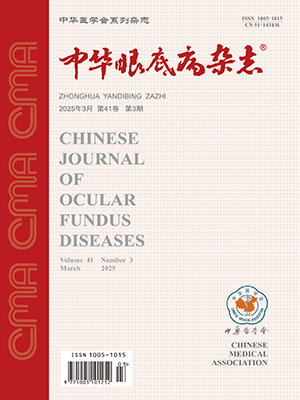ObjectiveTo investigate the cytotoxicity of triamcinolone acetonide (TA) on cultured human retinal pigment epithelial (RPE) cells.MethodsEffect of TA with different concentraion (0.4, 02, 01, 0.05, and 0.025 mg/ml) on the proliferation of RPE cells was detected by methyl thiazolyl tetrazolial (MTT) assay; The changes of cellular cycle treated by TA with the drug concentration of IC50 for 72 hours were measured by flow cytometry (FCM) ananlysis, and the morphological and ultrastructural changes of the cells were observed by phasecontrast microscopy and transmission electron microscopy.ResultsWith the concentration of 0.4-0.025 mg/ml, TA inhibited the growth of RPE cells obviously in a dose-dependent manner compared with the control (P<0.05), and the cells in S phase treated with TA decreased 10.6% compared with the control (P<0.05). Under the light microscope, sparse cells with irregular configuration and many prominences and cellular vacuoles in TA group can be seen. The results of transmission electron microscopy showed asymmetrically distributed cellular chromatin was, cavitated cytoplasm, and even some necrotic cells.ConclusionTA can inhibite the S-phase karyomitosis of RPE and inhibite the cellular proliferation; and destroye the cellular structure and lead to the necrosis, which indicates the cytotoxicity of TA on RPE.(Chin J Ocul Fundus Dis, 2005,21:233-236)
Citation: ZOU Ming,ZHANG Junjun.. Cytotoxicity of triamcinolone acetonide on human retinal pigment epithelial cells in vitro. Chinese Journal of Ocular Fundus Diseases, 2005, 21(4): 233-236. doi: Copy
Copyright © the editorial department of Chinese Journal of Ocular Fundus Diseases of West China Medical Publisher. All rights reserved




